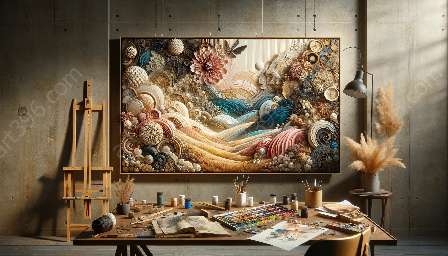When it comes to mixed media in graphic design and art, understanding the psychological and emotional effects of color combinations is crucial. The use of color can evoke different feelings and responses in viewers, shaping their experiences and interpretations of the artwork. In this comprehensive guide, we will explore the significance of color in mixed media, its impact on human perception, and how to harness its potential in creating engaging and compelling designs.
The Psychology of Color
Color psychology delves into the study of how different colors can affect human behavior and emotions. Each color carries its own unique meaning and can evoke specific responses in individuals. When used in combination, colors can create powerful visual stimuli that influence mood, perception, and even physical reactions.
Primary and Secondary Colors
Primary colors - red, blue, and yellow - are the building blocks for all other colors. These hues are known for their ability to command attention and convey strong emotions. Secondary colors, created by mixing primary colors, offer a range of dynamic and intermediate shades that can evoke diverse emotional responses based on their combinations and intensity.
Color Combinations and Emotions
The juxtaposition of colors in mixed media can elicit specific emotional and psychological reactions. For example, warm colors like red, orange, and yellow tend to evoke feelings of energy, warmth, and excitement. Cooler tones such as blue, green, and purple can create a sense of calm, tranquility, and peacefulness. By strategically combining colors, artists and designers can establish a desired mood and steer the viewer's emotional experience.
Impact on Mixed Media Graphic Design
In mixed media graphic design, understanding the psychological effects of color combinations is essential for conveying messages and eliciting desired responses. By utilizing contrasting or harmonious color schemes, designers can guide the audience's attention, impart certain emotions, and communicate the intended meaning of the artwork. Whether it's through digital platforms or physical prints, the strategic use of colors in mixed media graphic design can significantly impact the overall reception and engagement with the visual content.
Utilizing Color in Mixed Media Art
For mixed media artists, exploring the psychological and emotional effects of color combinations opens up new realms of expression and communication. By experimenting with diverse palettes and combinations, artists can infuse their creations with rich emotional depth, symbolism, and visual impact. Whether it's through painting, collage, or digital art, the understanding of color psychology empowers artists to amplify the resonance of their work and connect with viewers on a profound level.
Conclusion
The impact of color combinations in mixed media is profound and multifaceted. By comprehending the psychological and emotional effects of different color combinations, artists and designers can harness the power of color to shape immersive experiences, convey messages, and stir profound emotional responses. Whether in the realm of graphic design or mixed media art, the effective use of color can elevate creative works to new heights, leaving a lasting impression on audiences.

